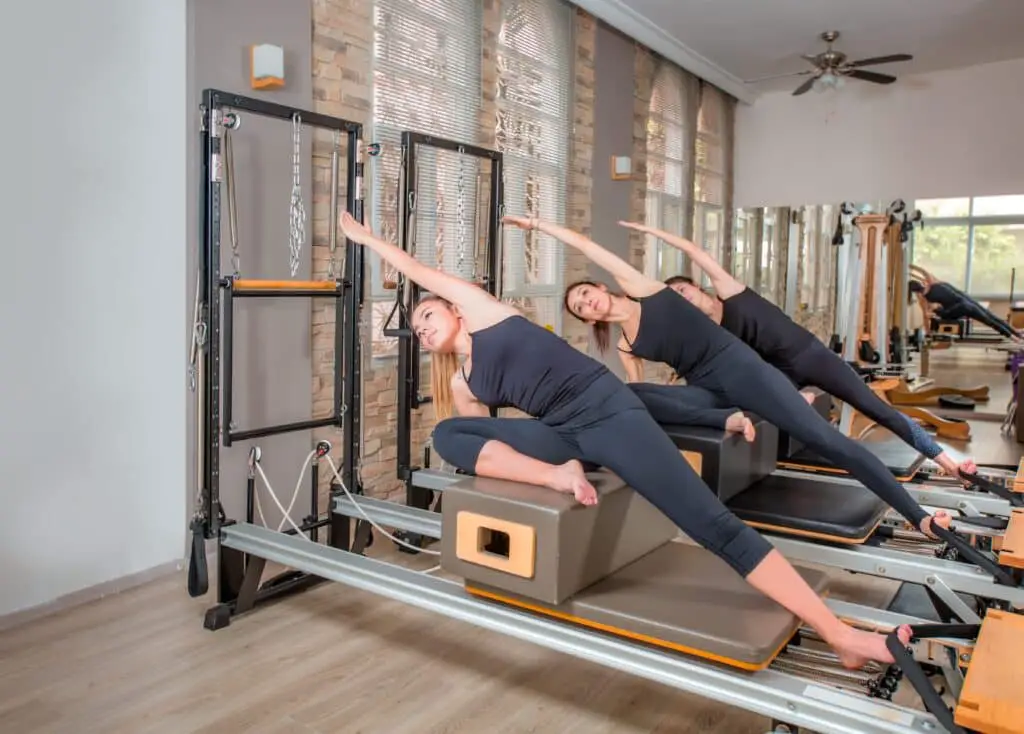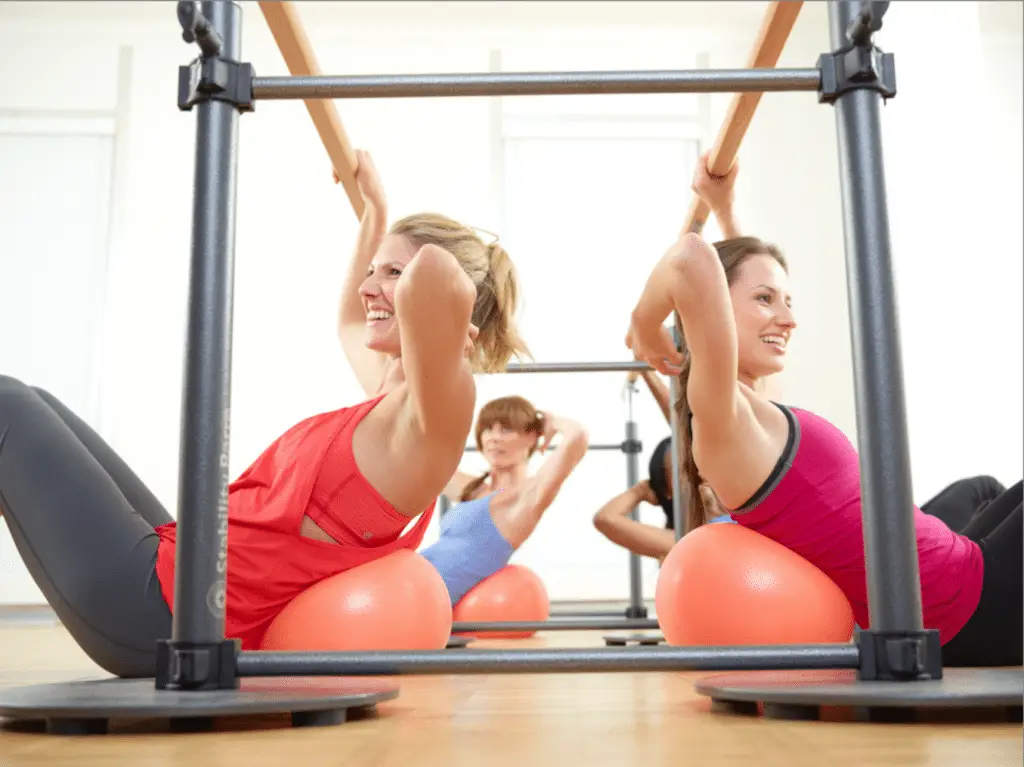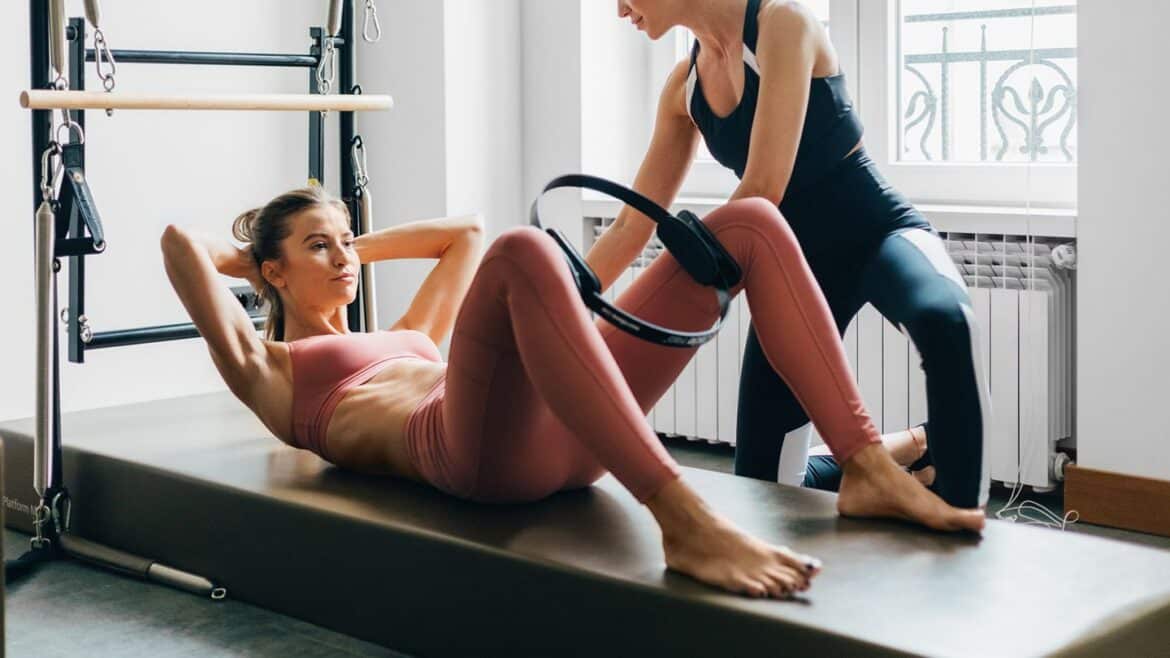Introduction
Is Pilates Strength Training: Pilates is a widely practiced exercise system that often raises questions about its classification in the realm of fitness. One common inquiry is whether Pilates can be considered a form of strength training. In this article, we will explore the principles of Pilates and its impact on muscle strength to determine whether it qualifies as a strength-training method. We’ll delve into the core concepts of Pilates and how it contributes to the development of a strong and resilient body.
Pilates is a mind-body exercise method that focuses on building core strength, flexibility, balance, and overall body awareness. Developed by Joseph Pilates in the early 20th century, it has gained popularity as a holistic approach to fitness and well-being. While Pilates is not a traditional form of strength training like weightlifting, it does incorporate elements of strength training into its routines. Pilates places a significant emphasis on developing a strong and stable core. Many Pilates exercises engage the muscles of the abdominal region, lower back, and pelvis, which are essential for maintaining good posture and overall body strength.
Pilates exercises often involve resistance provided by the body’s own weight, specialized equipment (such as the Reformer or Cadillac), or resistance bands. This resistance helps build muscle strength, particularly in the core and stabilizing muscles. Pilates aims to improve functional strength, which means that the exercises are designed to enhance the body’s ability to perform everyday movements with ease and efficiency. This includes activities like bending, lifting, twisting, and reaching.

Is Pilates sufficient for strength training?
Pilates can be used as strength training and can help to improve muscle strength but it is important to be working with enough resistance to tire the muscles and the amount needed varies a great deal from person to person.
Pilates as Strength Training
Core Strength: Pilates is renowned for its ability to develop core strength. Many Pilates exercises target the muscles of the abdomen, lower back, and pelvis, contributing to a strong and stable core.
Full-Body Engagement: While Pilates is known for core work, it engages various muscle groups throughout the body. Exercises often involve the legs, arms, shoulders, and back, promoting overall strength and muscle balance.
Functional Strength: Pilates places a strong emphasis on functional strength, meaning it enhances your ability to perform daily movements with efficiency and ease. This includes activities like bending, lifting, twisting, and reaching.
Resistance Training: Pilates exercises incorporate resistance provided by the body’s own weight, specialized equipment (e.g., Reformer, Cadillac), or resistance bands. This resistance helps build muscle strength, particularly in the core and stabilizing muscles.
Isometric Contractions: Many Pilates exercises involve holding positions or isometric contractions, which can contribute to muscle endurance and strength.
Is Pilates considered cardio or strength training?
Pilates is great for strengthening and toning with a focus your core and for increasing your flexibility. Since it is not designed to be an aerobic activity, don’t forget your cardio! Pilates involves precise moves and specific breathing techniques. It’s not for you if you prefer a less structured program.
Pilates as Cardiovascular Exercise
Elevated Heart Rate: Some Pilates routines, particularly those involving faster-paced movements and continuous flow, can elevate your heart rate. This increased heart rate is a fundamental component of cardiovascular exercise.
Improved Lung Capacity: Pilates incorporates controlled breathing patterns that enhance lung capacity and oxygen intake, similar to cardio exercises.
Endurance: Regular Pilates practice can lead to improved endurance, as it requires sustained effort throughout a session.
Pilates as Strength Training
Core Strength: Pilates is renowned for its focus on core strength. Many exercises target the muscles of the abdomen, lower back, and pelvis, which are essential for core stability and overall strength.
Full-Body Engagement: Pilates engages various muscle groups throughout the body, including the legs, arms, shoulders, and back. This comprehensive engagement contributes to overall muscle strength.
Resistance Training: Pilates exercises often involve resistance provided by the body’s own weight, specialized equipment (e.g., Reformer), or resistance bands. This resistance is a hallmark of strength training.
Is Pilates equivalent to weight training?
To quickly summarize, Pilates helps you develop a strong, lean, and toned body whereas weight lifting can result in a bigger bulkier body.
Pilates
Core Emphasis: Pilates places a significant emphasis on developing a strong and stable core. Many exercises target the muscles of the abdomen, lower back, and pelvis, which are essential for maintaining good posture and overall body strength.
Full-Body Engagement: While Pilates is known for core work, it engages various muscle groups throughout the body. Exercises often involve the legs, arms, shoulders, and back, promoting overall strength and muscle balance.
Functional Strength: Pilates aims to improve functional strength, meaning it enhances the body’s ability to perform everyday movements with efficiency and ease. This includes activities like bending, lifting, twisting, and reaching.
Resistance-Based Movements: Pilates exercises often involve resistance provided by the body’s own weight, specialized equipment (such as the Reformer or Cadillac), or resistance bands. This resistance helps build muscle strength, particularly in the core and stabilizing muscles.
Which is better Pilates or strength training?
Simply put, if your goal is to maintain a lean, toned, yet strong, and active body shape, Pilates is ideal for you. But if you want to get bigger and bulkier, then weight training is the right choice. But to support both, you have to adjust your diet accordingly.
Strength Training
Muscle Hypertrophy: Strength training is specifically designed to stimulate muscle hypertrophy, resulting in increased muscle size and strength.
Progressive Overload: It relies on the principle of progressive overload, where resistance or weight is gradually increased to challenge and strengthen the muscles continually.
Isolation of Muscle Groups: Strength training exercises can target specific muscle groups or individual muscles, allowing for precise muscle development.
Heavy Resistance: Weight training typically involves lifting heavy weights to create significant muscle tension, leading to muscle adaptation and growth.
Can I gain muscle with Pilates?
The Cleveland Clinic recommends Pilates to tone muscles more than build mass (14). You might not build excessive muscle mass, especially with classic Pilates. However, it will help you tone muscles to get your desired shape. You’ll have a leaner look with Pilates.
The Nature of Pilates
Core Emphasis: Pilates places a strong emphasis on developing a strong and stable core. Many exercises target the muscles of the abdomen, lower back, and pelvis, which are essential for maintaining good posture and overall body strength.
Full-Body Engagement: While Pilates is known for core work, it engages various muscle groups throughout the body. Exercises often involve the legs, arms, shoulders, and back, promoting overall muscle engagement and balance.
Functional Strength: Pilates aims to improve functional strength, meaning it enhances the body’s ability to perform everyday movements with efficiency and ease. This includes activities like bending, lifting, twisting, and reaching.
Resistance-Based Movements: Pilates exercises often incorporate resistance provided by the body’s own weight, specialized equipment (e.g., Reformer), or resistance bands. This resistance contributes to muscle strength and endurance.
Comparison to Traditional Strength Training
While Pilates can contribute to muscle gain, traditional strength training methods (such as weightlifting and resistance training) are more effective and efficient for significant muscle hypertrophy. Weightlifting, in particular, involves lifting heavier weights and employing progressive overload, which is crucial for substantial muscle growth.
Which is harder yoga or Pilates?
Pilates is certainly a more intense workout that burns calories faster and produces physical results quicker, so you could make the argument that Pilates is the harder of the two. But again, everything comes down to what you wish to get out of the class and the methods your instructor takes to get you there.
Yoga
Variety of Styles: Yoga encompasses a wide range of styles, from gentle and meditative practices like Hatha and Yin Yoga to more dynamic and physically demanding styles like Vinyasa and Power Yoga.
Flexibility and Balance: Yoga often involves poses that challenge flexibility, balance, and coordination. These postures require practitioners to stretch and engage various muscle groups.
Mental Focus: Yoga emphasizes mental focus, concentration, and breath control. Practitioners work on mindfulness and staying present during their practice.
Stress Reduction: Yoga is well-known for its stress-relieving benefits, promoting relaxation and mental clarity.
Is Pilates harder than strength training?
Though weight training can indeed be quite effective at improving core strength, pilates takes it to a far higher intensity, and is also capable of greatly improving the mobility of the entire body as well.
Yoga Challenges
Yoga can be physically demanding, especially in styles that involve challenging poses and sequences.
Holding postures for extended periods can test one’s strength, flexibility, and endurance.
Advanced yoga practices may involve complex inversions, arm balances, and deep stretches that require a high level of physical skill and mental focus.
Pilates Challenges
Pilates places a strong emphasis on core strength and stability, which can be particularly challenging for those with weaker core muscles.
Many Pilates exercises involve controlled, precise movements, demanding concentration and coordination.
High-intensity Pilates sessions can be physically taxing, requiring endurance and muscle engagement.
Ultimately, whether yoga or Pilates is harder is a matter of personal preference and fitness objectives. Some individuals may find the mental and physical challenges of yoga more demanding, while others may appreciate the focused and targeted strength training aspect of Pilates. Many people even choose to incorporate both practices into their fitness routines to enjoy a balanced approach to well-being.
Is Pilates better than HIIT?
And while strengthening small muscles can boost the body’s metabolism overtime, HIIT generally burns far more calories than a Pilates workout. “HIIT provides the perfect balance between cardio and strength,” says Kaiser. “It gives you more bang for your buck.
Pilates
Core Emphasis: Pilates places a significant focus on developing a strong and stable core. Many exercises target the muscles of the abdomen, lower back, and pelvis, enhancing core strength and stability.
Full-Body Engagement: While Pilates is known for core work, it engages various muscle groups throughout the body. Exercises often involve the legs, arms, shoulders, and back, promoting overall muscle engagement and balance.
Functional Strength: Pilates aims to improve functional strength, meaning it enhances the body’s ability to perform everyday movements efficiently.
Resistance-Based Movements: Pilates exercises often incorporate resistance provided by the body’s own weight, specialized equipment (e.g., Reformer), or resistance bands. This resistance contributes to muscle strength and endurance.
Traditional Strength Training
Muscle Hypertrophy: Strength training is specifically designed to stimulate muscle hypertrophy, resulting in increased muscle size and strength.
Progressive Overload: It relies on the principle of progressive overload, where resistance or weight is gradually increased to challenge and strengthen the muscles continually.
Isolation of Muscle Groups: Strength training exercises can target specific muscle groups or individual muscles, allowing for precise muscle development.
Heavy Resistance: Weight training typically involves lifting heavy weights to create significant muscle tension, leading to muscle adaptation and growth.

Conclusion
Pilates is indeed a form of strength training, albeit with its unique approach and principles. While it may not resemble traditional strength training methods involving heavy weights and resistance machines, Pilates offers a holistic and effective approach to building strength, flexibility, and overall body awareness. Pilates places a significant emphasis on developing core strength, which serves as the foundation for many other movements and activities.
It engages various muscle groups throughout the body, promoting balanced strength and improved functional abilities. Pilates exercises often involve resistance, whether from specialized equipment or the body’s own weight, which contributes to muscle endurance and strength development. Furthermore, the mind-body connection in Pilates, focusing on proper alignment, mindfulness, and controlled movement, enhances the quality of muscle engagement during exercises. This approach not only promotes strength but also improves posture, flexibility, and overall body function.
While Pilates may not fit the traditional definition of strength training, it offers a versatile and balanced approach to building strength that is accessible to individuals of all fitness levels. Whether you are looking to tone your muscles, improve core stability, or enhance your overall strength and flexibility, Pilates can be a valuable component of your fitness routine. Its adaptability and emphasis on functional strength make it a compelling choice for those seeking a well-rounded approach to fitness and well-being.

